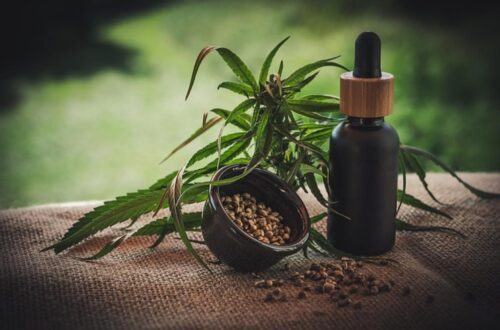Brace yourselves, CBD enthusiasts! The 2024 Farm Bill is here, and it’s brought some game-changing updates for the CBD industry. Whether you’re a seasoned user or just curious about CBD, these new regulations could ripple through your everyday life in interesting ways.
Think of the 2024 Farm Bill as a roadmap, guiding how CBD products are cultivated, manufactured, and sold. From new labeling requirements to advanced quality control measures, this bill aims to make the CBD landscape clearer and safer for everyone.
Are you ready to delve into how these changes impact everything from that soothing tincture on your nightstand to the CBD-infused skincare products in your bathroom? Let’s unpack what the 2024 Farm Bill means for CBD and how it might influence your choices going forward. Buckle up; it’s going to be an enlightening ride!
The History of Farm Bills and CBD Regulation
Before diving into the intricacies of the 2024 Farm Bill, it’s essential to understand the historical backdrop. Farm Bills in the U.S. have long been critical in shaping America’s agricultural policies, but only in recent years have they touched on CBD and hemp.
It all started with the 2014 Farm Bill, which allowed limited hemp cultivation for research purposes. This was a tiny yet significant step towards recognizing hemp’s potential beyond traditional agriculture.
Fast forward to the 2018 Farm Bill, often hailed as a landmark piece of legislation for CBD enthusiasts. This bill legalized the cultivation of hemp and separated it from marijuana, provided its THC content remained below 0.3%. It threw open the doors for an influx of CBD products, from oils to edibles, revolutionizing the market.
These strides in legislative action have paved the way for the 2024 Farm Bill, which seeks to refine and improve the regulatory framework surrounding CBD. By understanding these historical pivots, it’s easier to grasp the significance of the changes we are now witnessing and how they promise to shape the future of the CBD industry.
Key Provisions in the 2024 Farm Bill Affecting CBD
The 2024 Farm Bill is packed with provisions that promise to reshape the landscape of CBD regulation. Let’s break down some of the key points.
One of the primary provisions is the increase in the allowable THC threshold. The new bill raises the permissible limit from 0.3% to 1%, which is expected to expand the variety and potency of CBD products available on the market. This change hopes to alleviate some of the pressures on farmers and producers who struggled with the previous stringent limits.
Improved Clarity on CBD Product Classification
Another critical aspect is the refinement of guidelines around what constitutes a CBD product. The new bill provides clearer definitions, helping to distinguish between dietary supplements, cosmetics, and pharmaceuticals. This should streamline regulatory oversight and make it easier for consumers to understand what they are purchasing.
Enhanced testing and labeling requirements are also a significant focus. The bill mandates more rigorous third-party testing to ensure product purity and consistency. Labels will now need to be more comprehensive, providing detailed information about CBD content, sourcing, and potential allergens.
Additionally, there are new financial incentives for hemp farmers. Grants and subsidies aim to encourage sustainable farming practices and research into hemp-derived products. This added support should boost innovation and growth in the industry.
The 2024 Farm Bill’s provisions signal a more mature and structured approach to CBD regulation, addressing past ambiguities and setting the stage for a more reliable and consumer-friendly market. It’s an exciting time for both the industry and those of us who love CBD products!
Impact of the 2024 Farm Bill on Hemp Farming Practices
The 2024 Farm Bill is set to bring some significant changes to hemp farming practices, promising more support and clearer guidelines.
Firstly, the bill promotes sustainable farming. Farmers who adopt eco-friendly practices stand to benefit from federal grants and subsidies. This not only encourages the use of renewable resources but also promotes soil health and biodiversity.
Another impactful change is the revision of crop insurance policies. The updated policies provide better coverage for hemp crops, protecting farmers from unexpected losses due to weather or pest issues. This form of financial security is crucial for farmers, reducing risk and encouraging more to venture into hemp farming.
Additionally, the bill places an emphasis on research and development. With increased funding directed towards studying new hemp strains and cultivation techniques, farmers can expect more innovative solutions to optimize their yield and product quality. Enhanced research support paves the way for advancements in growing practices.
Streamlined compliance procedures are also a highlight. The bill reduces the bureaucratic red tape, making it easier for farmers to meet regulatory requirements. Simplified processes mean less time spent on paperwork and more time focusing on farming.
Consumer Trends in CBD Products Post-2024 Farm Bill
With the 2024 Farm Bill shaking things up in hemp farming, it’s no surprise that consumer trends in CBD products are evolving too.
One major trend is the increasing demand for transparency and quality. Consumers are becoming more informed and want to know exactly where their CBD products come from and how they’re made. This demand has pushed brands to provide detailed information on sourcing, manufacturing practices, and third-party testing results.
Another shift is the rise in popularity of organic and sustainably-produced CBD products. As the bill bolsters sustainable farming methods, more consumers are leaning towards products that align with their eco-friendly values. Organic certifications and environmentally conscious packaging are becoming key selling points.
Customization and Personalization
Consumers are also seeking more personalized CBD experiences. Brands are responding by offering products tailored to individual needs, such as CBD tinctures designed for better sleep or lotions crafted for joint pain relief. This trend towards customization is making the CBD market more dynamic and consumer-centric.
What’s more, there’s a growing interest in alternative consumption methods. While CBD oils and tinctures remain popular, edibles, topicals, and even CBD-infused beverages are gaining traction. The variety allows users to choose the format that best fits their lifestyle and preferences.
Finally, community-focused and locally produced CBD products are seeing a rise in popularity. People are more inclined to support local farmers and processors who are transparent about their practices and contribute to the local economy. This trend strengthens the bond between consumers and producers, fostering trust and loyalty.
In essence, the post-2024 Farm Bill landscape is shaping a more aware, discerning, and eco-conscious CBD consumer base. Brands that can meet these evolving demands are likely to thrive in this new era.
Regulatory Challenges and Opportunities for CBD Industry
Navigating the evolving landscape post-2024 Farm Bill, the CBD industry faces a unique blend of challenges and opportunities.
One significant challenge is the patchwork of regulations across different states. While the Farm Bill sets broad federal guidelines, states have the autonomy to impose their own rules, creating a complex regulatory environment. This can be confusing for businesses operating in multiple regions, as compliance requirements may vary dramatically.
Another challenge is the ongoing scrutiny from federal agencies like the FDA. As the CBD market grows, so does the need for clear guidelines on labeling, marketing, and health claims. The industry is under pressure to adhere to stringent standards to ensure product safety and efficacy, which can be both time-consuming and costly.
Market Expansion and Innovation
On the flip side, these regulatory challenges present opportunities for growth and innovation. Companies that invest in compliance and quality assurance can stand out in a crowded market. By adhering to high standards and gaining consumer trust, they can build a loyal customer base and carve out a competitive edge.
Also, regulatory clarity can open doors for new product development. Clear guidelines on permissible ingredients and formulations allow companies to explore innovative CBD products without the fear of regulatory pushback. The development of novel CBD-infused products, such as cosmetics and wellness supplements, can drive market expansion.
Additionally, as regulations around hemp farming become more defined, there’s a push towards improved agricultural practices. This opens up opportunities for collaboration between farmers and CBD companies to promote sustainability and quality from the ground up.
Lastly, the global market for CBD is ripe with opportunities. Countries worldwide are re-evaluating their stance on CBD, influenced by changes in U.S. policy. Companies that stay ahead of regulations can tap into international markets, expanding their reach and influence.
Research and Development Efforts in CBD Post-2024
With the regulatory landscape becoming more defined, research and development in the CBD industry are set to skyrocket. Companies now have clearer guidelines, allowing scientists and researchers to innovate with greater confidence.
One major area of focus is the exploration of CBD’s potential therapeutic benefits. Researchers are conducting clinical studies to understand how CBD can aid in treating conditions such as anxiety, chronic pain, epilepsy, and even neurodegenerative diseases. The results of these studies could significantly impact how CBD is perceived in the medical community and among consumers.
Innovations in CBD Delivery Methods
Another exciting development is the innovation in CBD delivery methods. Traditional oils and tinctures remain popular, but new methods, like transdermal patches, CBD-infused edibles, and inhalable products, are gaining traction. These new formats offer more options for consumers, allowing them to choose the most convenient and effective method for their needs.
In addition, advancements in nano-technology are being leveraged to enhance the bioavailability of CBD. Nano-emulsions, for instance, ensure that CBD is more easily absorbed by the body, making the products more effective at lower doses. This not only improves the user experience but also helps companies create more efficient and cost-effective products.
Collaboration between universities, research institutions, and private companies is also on the rise. These partnerships are fostering groundbreaking studies and accelerating the pace at which new information is brought to the market. Academic institutions bring rigorous scientific methods, while private companies provide the resources necessary for large-scale research and development.
Furthermore, the global interest in hemp-derived CBD is pushing for a more diversified research effort. Different climates and cultivation techniques are being studied to improve yield, quality, and sustainability. This broadened scope of research holds promise for innovative farming practices that could benefit both the CBD industry and the agricultural sector as a whole.
To sum up, the post-2024 era promises to be a time of significant advancements and discoveries in the CBD industry. With solid regulatory frameworks and a collective push towards innovation, the future of CBD looks both promising and exciting.

Community Responses to the 2024 Farm Bill Changes
The 2024 Farm Bill has certainly sparked a lot of conversation within the CBD community.
Conclusion: Embracing the Shifts in CBD Landscape
The 2024 Farm Bill marks a significant turning point for the CBD industry. From clearer regulations to increased consumer confidence, this new legislative framework brings a wave of positive changes that most in the community are eager to embrace. By setting higher standards, it not only makes products safer but also opens doors for broader acceptance and integration of CBD into daily life.
However, it’s essential to acknowledge the challenges that come with these updates. Small businesses face financial hurdles in meeting compliance costs, and there’s a need for support mechanisms to ensure they aren’t left behind. Yet, despite these concerns, the overall sentiment remains optimistic. The possibilities for innovation, coupled with enhanced safety guidelines, create a promising future for the industry.
Advocacy groups and researchers play a crucial role in this evolving landscape, pushing for both accountability and accessibility. Their tireless efforts help bridge the gap between policymakers, producers, and consumers, fostering a more informed and dynamic market.
As we look ahead, the impact of these changes will undoubtedly transform how we perceive and use CBD. From wellness routines to scientific exploration, the horizon is filled with potential. By embracing these shifts, we can look forward to a thriving CBD landscape where quality and innovation are at the forefront.
In conclusion, the 2024 Farm Bill may bring its set of challenges, but it also provides an opportunity for growth and improvement. Together, as a community, embracing these changes will help pave the way for a safer, more innovative, and widely accepted CBD industry.






